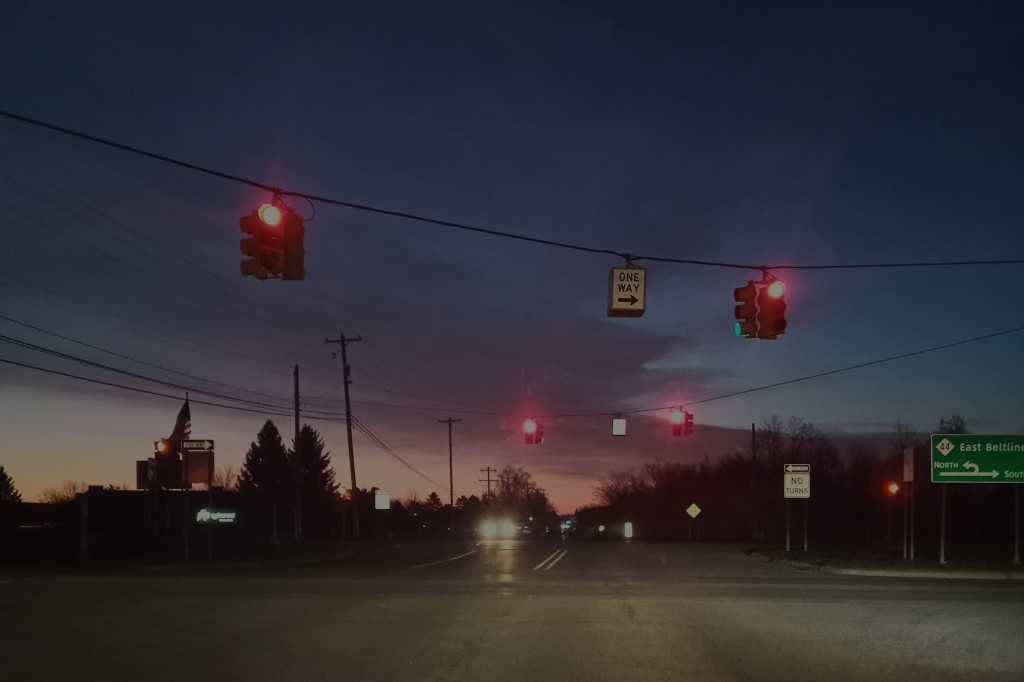
This grab shot of the dawn light is good enough as writing prompt, but as a likeness to the visual experience via eyeball and brain it is a poor representation. Probably a fancier camera and more time to compose the shot, or at least to finesse the exposure, would give a result that is closer to the original feeling of awe and wonder. But even that would be two-dimensional with imposed borders to the viewing area. The raw experience was immersive in three dimensions and with time’s passing to make the colors change and the clouds move. In the original moment there was no picture frame to cut off the adjacent context since the central vision supplied the sharp details and color, while the peripheral vision filled in the surrounding spaces and range of light values. And, of course, at this busy intersection the cross-traffic was streaking past at speed, lending to the sense of surprise at such fine beauty in the distance even as commuters motored along with their minds on the road, the radio or some other audio accompaniment to pass the time, but maybe oblivious of the breaking light of this morning.
By analogy from the experiential gap between image and reality, there is something similar that happens in a larger sense. One’s life experience is filled with things that defy verbal description or maybe exceed one’s power of reasoning, too. Communicating to others inevitably loses something in the translation from raw event to spoken (or written or recorded) words. Unintended meanings may well tag along while other things that felt significant, fail to elicit similar impressions on others who were not present. Thus, it is worth acknowledging this gap between original instance of something and any rendition that is derivative to the source material. For practical or economic purposes the frail and provisional version of the sturdy original might function all right as a place holder, as the basis to begin a discussion, or as something suitable to illustrate a point. So there is value in a sketch, photo, recording, or verbal summary. But there should never be any confusion between the “real thing” and its portrayal later.



